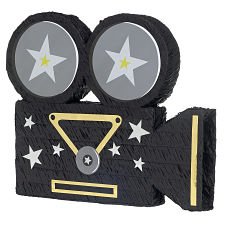If you're looking for a fun, creative way to get your little ones understanding the incorporation of action words and emotions within movement, this exercise is for you! I devised this a few years back and have had great success getting younger students to work in pairs and explore the use of action vocabulary words to portray scenes they envisage through dance. Based on your dancers' level and age, the exercise can also be simplified or made more challenging to meet the needs of your dancers. As the teacher, it's also wonderful to sit back and watch the imagination of your students unleashed! Just watch the out of this world, creative things they create!
* For Ages 5 and up
MATERIALS
Suggested Music: "Fascinating Rhythm- Songs of the 1920’s"
LEARNING OUTCOMES
Emoting through movement
Partnership skills
Cooperation and patience
Interpretation of directives
Leadership skills
Communication (verbal and nonverbal)
Whole body movement
Mind-body connection
Concept development
Performance quality
SET UP
Children begin sitting in a circle INTRODUCTION .The teacher explains the Quiet on the Set rules as follows: You will be working in pairs. One student will be the silent film director and the other will be the silent film movie star. While the background music plays, the director through voice and movement will call “ACTION” to begin their scene. The director will call out an action word and an emotion (i.e. jump and angry) they would like to see portrayed from lists written on the board. The actors will then dance and act out how they think that action and emotion looks and feels. The director will then call “CUT” when they feel their scene has reached a conclusion.
EXPLORATION
The teacher invites a volunteer into the fishbowl with them for a practice run. The teacher should give student the option to be the director or the actor. Teacher and student perform the exercise so the group gets a sense of understanding through the demonstration. They repeat the demo by then switching roles. After exercise, teacher can ask for any questions or comments. The teacher should pair students up by their preferred method and delegate who will first be director and who is actor. Once the pairs are assigned, they are directed to find a space in the room. The teacher makes sure they are situated. Instruct the directors to call “ACTION” after they hear the music begin. Also advise those directing to call out emotions in which the actors can act out dramatically and remind them to give actors enough time to explore the action before moving on to the next. Teacher gives director a cue when they should start wrapping up to call “CUT.” Repeat exercise switching roles.
DEVELOPMENT
Once the partners have a chance to get the feel of the exercise, challenge students by now calling out a movie genre (i.e. horror movie, romance, comedy, etc) in which they must adapt their emotions into. Teacher may opt to circulate the room and give each individual group their own genre to work with the entire exercise as well. Once a bit more advanced, teacher can change and call out multiple movie genres during one exercise run to encourage shift of interpretation through quicker transitions.
CONCLUSIONS
Teacher has half the groups perform activity for the other half who will act as audience. Teacher commences discussion on what the audience observed, liked, noticed about relationship of emotions to movement, etc. Switch groups.
ADAPTATIONS
Teacher may opt to review what emotions are and get examples from students prior to introduction of exercise if necessary.
Add multiple movie genres
Add specific scene scenarios
Add verbal sound effects or spoken word to their emotions and scenes
Add multiple actors to a scene
Choose one group to perform for the class and whisper the movie genre only to the director and actor - let audience guess what is was at the end


